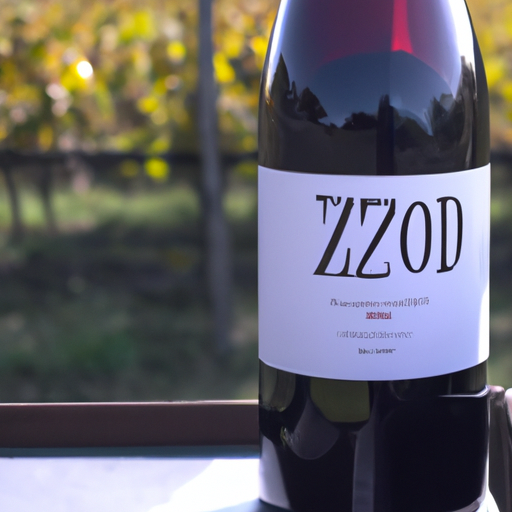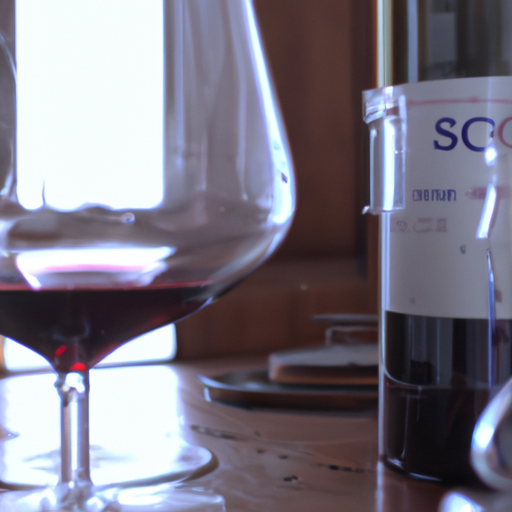
The Importance of Acidity in Bordeaux’s 2022 Vintage Testing
Bordeaux, renowned for its exceptional wines, is a region that has long captivated the palates of wine enthusiasts around the world. The quality of Bordeaux wines is attributed to a multitude of factors, including the region’s unique terroir, grape varieties, and winemaking techniques. However, one often overlooked aspect that plays a crucial role in the overall character and aging potential of Bordeaux wines is acidity.
Acidity is a fundamental component of wine, providing balance, structure, and freshness. It is the backbone that supports the other elements, such as fruit flavors and tannins, and contributes to a wine’s longevity. In Bordeaux, where the climate is generally moderate, acidity is particularly important in ensuring that the wines retain their vibrancy and age gracefully.
As winemakers in Bordeaux gear up for the 2022 vintage, testing for acidity becomes a critical step in the winemaking process. The acidity levels in the grapes at harvest determine the potential quality of the wine and guide winemakers in making crucial decisions during fermentation and aging.
To assess the acidity of the grapes, winemakers employ various methods, including pH measurements and titratable acidity tests. pH measures the level of acidity or alkalinity in a solution, with lower values indicating higher acidity. Titratable acidity, on the other hand, measures the total amount of acid present in the grapes, providing a more comprehensive understanding of the wine’s acidity profile.
By testing the acidity of the grapes, winemakers can determine the optimal time to harvest. Grapes with higher acidity levels are typically harvested earlier, as they have the potential to produce wines with greater freshness and aging potential. On the other hand, grapes with lower acidity may be left on the vine longer to develop more complex flavors.
During fermentation, acidity plays a crucial role in shaping the wine’s flavor profile. The conversion of sugar into alcohol by yeast naturally reduces acidity, so winemakers must carefully monitor and manage this process. They may choose to employ techniques such as malolactic fermentation, which converts harsher malic acid into softer lactic acid, to balance the wine’s acidity and enhance its complexity.
As the wine ages in oak barrels or bottles, acidity continues to play a vital role. It acts as a preservative, helping the wine to maintain its freshness and preventing premature oxidation. Wines with higher acidity levels tend to age more gracefully, developing complex aromas and flavors over time.
In Bordeaux, where wines are often known for their ability to age for decades, testing the acidity of the 2022 vintage is of utmost importance. It allows winemakers to assess the potential of the wines and make informed decisions throughout the winemaking process. By ensuring that the acidity is in balance, winemakers can create wines that showcase the unique characteristics of the vintage and have the potential to age gracefully for years to come.
In conclusion, acidity is a crucial component in Bordeaux wines, providing balance, structure, and freshness. Testing the acidity of the grapes during the 2022 vintage is essential for winemakers to make informed decisions throughout the winemaking process. From determining the optimal harvest time to managing fermentation and aging, acidity plays a vital role in shaping the character and aging potential of Bordeaux wines. By carefully monitoring and managing acidity levels, winemakers can create wines that embody the unique qualities of the vintage and stand the test of time.
Analyzing the Acidity Levels in Bordeaux’s 2022 Vintage: A Comprehensive Guide

Bordeaux, known for its prestigious wines, is a region that has been producing exceptional vintages for centuries. Each year, winemakers eagerly anticipate the harvest season to assess the quality of the grapes and determine the potential of the vintage. One crucial aspect that winemakers pay close attention to is the acidity levels in the grapes, as it plays a significant role in the overall balance and aging potential of the wine.
Acidity is a fundamental component of wine, providing freshness, structure, and balance. It is responsible for the crispness and liveliness that we often associate with white wines and the backbone and longevity of red wines. In Bordeaux, where both red and white wines are produced, understanding and managing acidity is of utmost importance.
To analyze the acidity levels in Bordeaux’s 2022 vintage, winemakers employ various techniques and tools. One commonly used method is the measurement of pH levels. pH is a scale that measures the acidity or alkalinity of a solution, with lower values indicating higher acidity. By measuring the pH of the grape juice or wine, winemakers can assess the overall acidity and make informed decisions during the winemaking process.
Another technique used to analyze acidity is titration. This method involves adding a solution of known concentration to the grape juice or wine until a chemical reaction occurs, indicating the endpoint of the titration. The amount of solution required to reach the endpoint provides valuable information about the acidity levels. Winemakers can then adjust the acidity if necessary, using techniques such as blending or adding tartaric acid.
In addition to these laboratory-based methods, winemakers also rely on their sensory evaluation skills to assess acidity. Tasting the grapes and the resulting wines allows them to gauge the perceived acidity, taking into account factors such as tartness, freshness, and balance. This subjective evaluation complements the objective measurements obtained through scientific analysis, providing a more comprehensive understanding of the acidity levels in the vintage.
The acidity levels in Bordeaux’s 2022 vintage are of particular interest due to the unique weather conditions experienced during the growing season. Factors such as temperature, rainfall, and sunlight exposure can significantly influence the acidity of the grapes. In 2022, Bordeaux experienced a relatively cool and wet summer, which could potentially result in higher acidity levels compared to warmer and drier years.
Higher acidity levels in the grapes can be both a blessing and a challenge for winemakers. On one hand, it can contribute to the freshness and vibrancy of the wines, enhancing their aging potential. On the other hand, excessive acidity can lead to unbalanced wines that are overly tart and lacking in harmony. Therefore, winemakers must carefully manage the acidity levels through various winemaking techniques, such as malolactic fermentation or oak aging, to achieve the desired style and balance.
In conclusion, analyzing the acidity levels in Bordeaux’s 2022 vintage is a crucial step in understanding the potential of the wines. Through scientific measurements, such as pH and titration, as well as sensory evaluation, winemakers can assess the acidity and make informed decisions during the winemaking process. The unique weather conditions of the vintage add an extra layer of complexity, making it even more important to carefully manage the acidity levels to achieve the desired style and balance. As Bordeaux continues to produce exceptional wines, the analysis of acidity remains a vital aspect of winemaking in this renowned region.
Exploring the Impact of Acidity on the Taste Profile of Bordeaux’s 2022 Vintage
Bordeaux, the renowned wine region in southwestern France, is known for producing some of the world’s finest wines. Each year, winemakers eagerly anticipate the harvest season to assess the quality of the grapes and predict the potential of the vintage. One crucial aspect that winemakers pay close attention to is the acidity of the grapes, as it plays a significant role in shaping the taste profile of the wine.
Acidity is a fundamental characteristic of wine that contributes to its overall balance and structure. It is the presence of acids, such as tartaric, malic, and citric acids, that gives wine its refreshing and crisp sensation on the palate. In Bordeaux, the acidity of the grapes is particularly important due to the region’s maritime climate and the influence of the Gironde Estuary.
To evaluate the acidity of Bordeaux’s 2022 vintage, winemakers employ various testing methods. One commonly used technique is the measurement of pH levels. pH is a scale that indicates the acidity or alkalinity of a substance, with lower values representing higher acidity. By measuring the pH of the grape juice or must, winemakers can assess the overall acidity of the grapes.
Another method used to test acidity is titration. This process involves adding a solution of known concentration to the grape juice or must until a chemical reaction occurs, indicating the endpoint of the titration. The amount of solution required to reach the endpoint provides an indication of the acidity level.
Winemakers also rely on their sensory evaluation skills to assess acidity. They taste the grapes to determine their level of tartness and evaluate the balance between sweetness and acidity. This subjective assessment, combined with objective measurements, helps winemakers make informed decisions about the potential of the vintage.
The acidity of Bordeaux’s 2022 vintage will have a significant impact on the taste profile of the wines. Higher acidity levels can result in wines that are vibrant, fresh, and lively, with a crisp and zesty character. These wines are often well-suited for aging, as the acidity helps preserve their structure and balance over time.
On the other hand, lower acidity levels can lead to wines that are flabby and lacking in structure. They may appear dull on the palate and lack the necessary acidity to provide a refreshing sensation. Winemakers must carefully manage the acidity of the grapes during the winemaking process to ensure that the resulting wines are well-balanced and enjoyable.
The acidity of Bordeaux’s 2022 vintage will also influence the food pairing potential of the wines. Wines with higher acidity levels are often excellent companions for a wide range of dishes, as the acidity cuts through rich and fatty flavors, cleansing the palate. They can enhance the flavors of seafood, poultry, and fresh vegetables, creating a harmonious dining experience.
In contrast, wines with lower acidity may struggle to complement certain foods, as they lack the necessary acidity to balance out rich and heavy flavors. They may be better suited for lighter dishes or enjoyed on their own as an aperitif.
In conclusion, the acidity of Bordeaux’s 2022 vintage plays a crucial role in shaping the taste profile of the wines. Winemakers employ various testing methods, such as pH measurement and titration, to assess the acidity levels of the grapes. The acidity will determine whether the wines are vibrant and refreshing or lacking in structure. It will also influence the food pairing potential of the wines. As winemakers continue to evaluate the acidity of the grapes, wine enthusiasts eagerly await the release of Bordeaux’s 2022 vintage, anticipating the unique flavors and characteristics it will bring.






